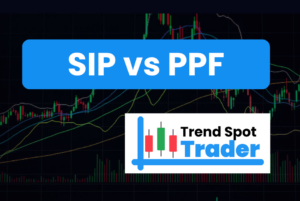Understanding Stock Market Fundamentals: A Guide for Beginners
Investing in the stock market requires more than just intuition—it demands a clear understanding of fundamental metrics. This guide will walk you through some key indicators to evaluate a stock’s financial health and growth potential.
Key Financial Metrics
- Market Capitalization
Market capitalization represents the total market value of a company’s outstanding shares. For example, a mid-cap company may have a market cap of ₹20,000 Cr, reflecting its position in the industry. - Price-to-Earnings (P/E) Ratio
The P/E ratio compares a company’s current share price to its earnings per share (EPS). If the P/E ratio of a stock is 16 and the industry average is 15, it suggests that the stock is trading at a slight premium to its peers. - Price-to-Book (P/B) Ratio
The P/B ratio compares a stock’s market value to its book value. For instance, a P/B ratio of 4 could indicate the stock is priced higher than its tangible assets, often reflecting investor confidence. - Return on Equity (ROE)
ROE measures a company’s profitability against shareholders’ equity. An ROE of 25% indicates strong financial performance, often a sign of efficient management. - Debt-to-Equity Ratio
A debt-to-equity ratio of 0.6 shows a balanced approach to leveraging debt for growth without excessive risk. - Dividend Yield
Dividend yield reflects the return on investment through dividends. A yield of 1.5% might not seem high but often signals stable payouts from mature companies. - Book Value and Face Value
Book value refers to the per-share value of the company’s net assets, while the face value is its nominal value. These metrics provide additional context for evaluating stock prices.
Conclusion
Understanding these financial fundamentals is crucial for making informed decisions in the stock market. By comparing these metrics with industry averages, investors can better evaluate which stocks align with their financial goals.





